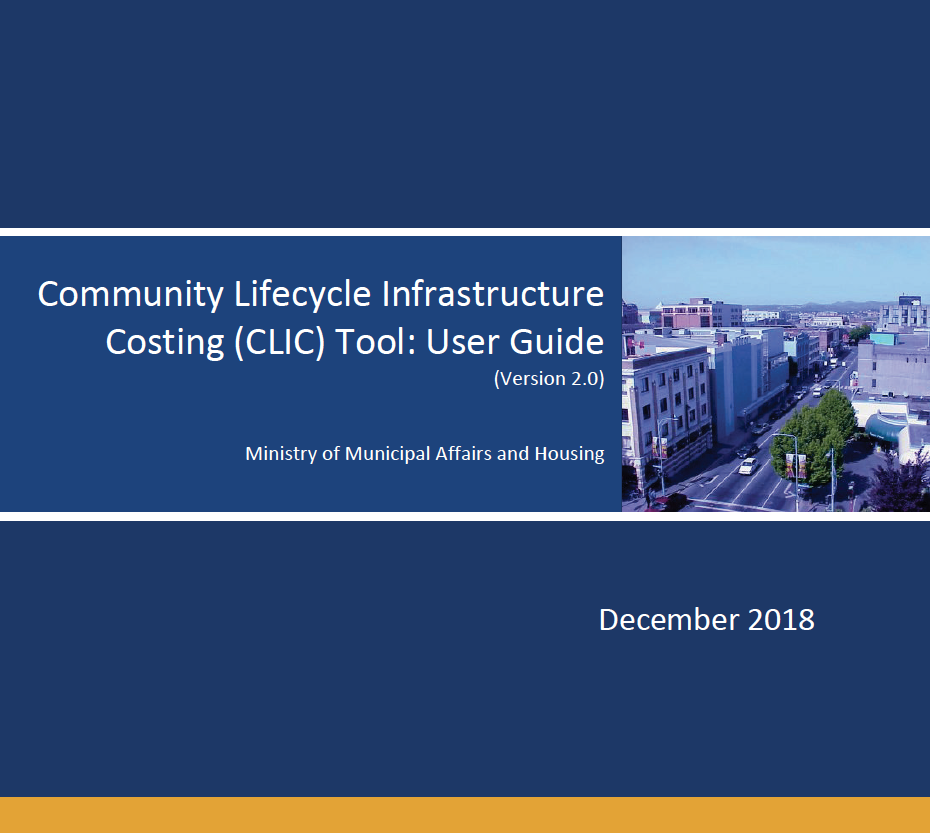Community lifecycle infrastructure costing
Community lifecycle infrastructure costing can help local governments estimate the entire lifecycle costs of infrastructure, such as water, sewer and transportation, for different land use patterns, for example, compact- versus low-density development.
New development and land use planning decisions require careful consideration as they affect the scale, scope, and type of infrastructure needs. The full financial impact of these decisions will influence long-term community sustainability and resilience.
The community lifecycle infrastructure costing tool (CLIC Tool) can help local governments better understand the long-term cost implications of land use decisions. The tool integrates infrastructure lifecycle costs (development, maintenance, servicing and replacement) into land use planning and development scenarios. Specific applications of the tool have modelled how compact development is more cost-effective over time than lower density development.
The analysis generated by the CLIC Tool can help local governments build business cases for the development of more compact, complete, connected and centred communities. The tool also fosters integrated and informed decision-making with the potential to deliver more cost-effective, and resilient land use decisions.
The CLIC Tool was designed to help local governments estimate the lifecycle cost implications of different land use patterns over a 100-year period. It was developed in collaboration with local governments and other agencies. The CLIC Tool can analyse neighbourhood and subdivision-scale developments, small site-scale, and large official community plan (OCP)-scale analyses.
Typical comparisons that have been analyzed by communities to date include:
- Low- or medium-density versus high-density development on the same site
- Greenfield versus infill development of the same size and density
- Serviced versus unserviced development
- Specific focusses within the same site footprint, for example, narrow roads versus wide roads and small lots versus large lots
- New growth area scenarios (as an addition to the existing community scenario)
CLIC Tool
The CLIC Tool and user guide are free to download:
The data collection worksheet and implementation process guide can help communities identify the data that needs to be collected to populate the CLIC Tool, who to involve and how long it might take:
Case Studies
The following case studies illustrate how the CLIC Tool has been applied by a range of B.C. communities:
Local governments are encouraged to strive for the following characteristics in shaping their communities as sustainable, resilient places:
Resources & Related Links
Contact information
Contact us if you have questions about community lifecyle infrastructure costing.
250 356-0284
1 800 663-7867
LUPRI@gov.bc.ca

